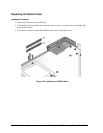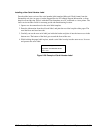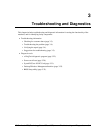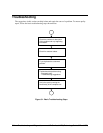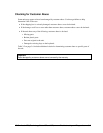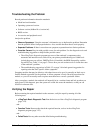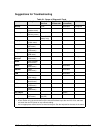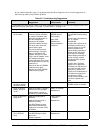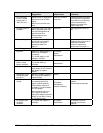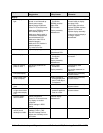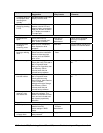
3-4 Troubleshooting and Diagnostics HP Omnibook XE3 (Technology Codes GE and GD)
Troubleshooting the Problem
Record pertinent information about the notebook:
•
Model and serial number.
•
Operating system and version.
•
Software version (hidden file c:\version.inf).
•
BIOS version.
•
Accessories and peripherals used.
Analyze the problem:
•
Observe Symptoms.
Using the customer’s information, try to duplicate the problem. Determine
how the problem differs from proper behavior. Also, note the functions that
do
work properly.
•
Separate Problems.
If there is more than one symptom, separate them into distinct problems.
•
Consider Causes.
Keep in mind possible causes for each problem. Use the diagnostic tools and
troubleshooting suggestions to help find the possible causes.
The e-DiagTools diagnostic program tests most of the notebook’s components using
automatic and interactive tests, and will be your primary troubleshooting tool. Other tools
include the power-on self-test, DMI/TopTools (if installed), the BIOS Setup utility, and the
Sycard PCCtest. Table 3-1 on page 3-5 shows how you can use these tools to isolate the cause
of the notebook’s problem.
The troubleshooting suggestions in Table 3-2 on page 3-6 include general suggestions for
repairing units that show specific failure symptoms.
Swapping modules that may be defective with others known to be good is generally an ideal way to
find the module responsible for the problem. A failure symptom is rarely caused by more than one
module, so you will not usually need to replace more than one to correct a particular failure.
After you replace a module, the notebook will normally be in a confused state and lock up when you
apply power. If this happens, press the system-off switch: this resets the notebook, so that you can
restart it in a known state.
Verifying the Repair
Before returning the repaired notebook to the customer, verify the repair by running all of the
following tests:
•
e-
DiagTools Basic Diagnostic Test.
Run the basic test of the e-DiagTools diagnostic program
(page 3-22).
–and–
•
Function Tests.
Run tests that check the repaired function, such as in the e-DiagTools
diagnostic program (page 3-22).
–and–
•
Failed Tests.
Run any other tests that failed during troubleshooting.



